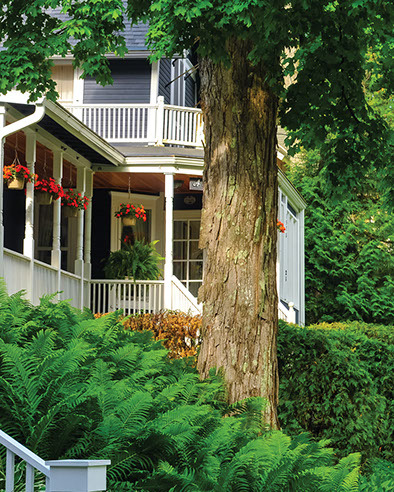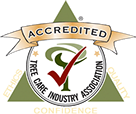
Fall/Winter 2017
Arboriculture 101
Here are some topics we frequently review with clients about their trees. There are always exceptions to the information here, so please consult your arborist as site and tree conditions vary!
Roots:
They are the most important part of a tree, shrub, or any plant. ALL tree roots are typically found within the first 36 to 42” of soil with most of the small fibrous absorption roots located in the upper 6 to 10.” They extend at least 1/3rd past the “drip-line” (AKA Critical Root Zone) or ends of the tree branches if not greater. The most important of these roots to ensure not to scar, sever or damage are those directly surrounding the tree as it may compromise stability and could lead to further decay. Species matter, as well as percentage of root zone impacted, age, and condition of the tree. It typically takes anywhere from 2 to 10 years to fully realize the impacts from these changes which most of the time are related to construction of some kind and site improvements. Our plea as arborists is to be given the opportunity to discuss and review best management tree preservation practices during the design phase or prior to commitment of the project with contractors.
Cavities/Holes in trees:
Not all cavities render a tree as a potential hazard that needs to be removed. A proper Tree Risk Assessment, which takes into consideration many factors such as (a) site (b) species (c) loads like wind exposures and crown density (d) condition of tree parts (crown/branches, trunk and roots/root collar) with assessment of surrounding targets, likelihood of failure, impact and consequences of that impact all equate to a risk rating. Most of the Almstead team have taken the intensive TRAQ (Tree Risk Assessment Qualified) course provided by the International Society of Arboriculture (ISA). Because of this training, we find ourselves looking at the health and vigor of a tree rather than just the cavities present when considering tree removal.
Tree Pruning:
Concentrate on removing dead, diseased, decayed, and cracked branches, known as a crown cleaning. Some select live branches or inferior interior water sprouts may be removed but as a rule, less is better. Crown reduction through selective branch end thinning is an acceptable means of reducing branch failure especially on mature trees and ones with new exposures. Young trees should be pruned for structure and trained properly every few years to avoid future failures.
Almstead arborists have 100s of years of combined knowledge and experience on tree, shrub and lawn care spread amongst us. We are ready and available for expert advice when needed, use us!


LOCATIONS:
Lower Westchester County, NY and New York City
58 Beechwood Ave, New Rochelle, NY 10801
914-576-0193
Upper Westchester (North of I-287)
15 Broadway, Hawthorne, NY 10532
914-741-1510
Fairfield County, Connecticut
80 Lincoln Avenue, Stamford CT 06902
203-348-4111
Bergen & Passaic Counties, NJ
504 High Mountain Road, North Haledon, NJ 07508
973-636-6711
Contact us for a Free Consultation